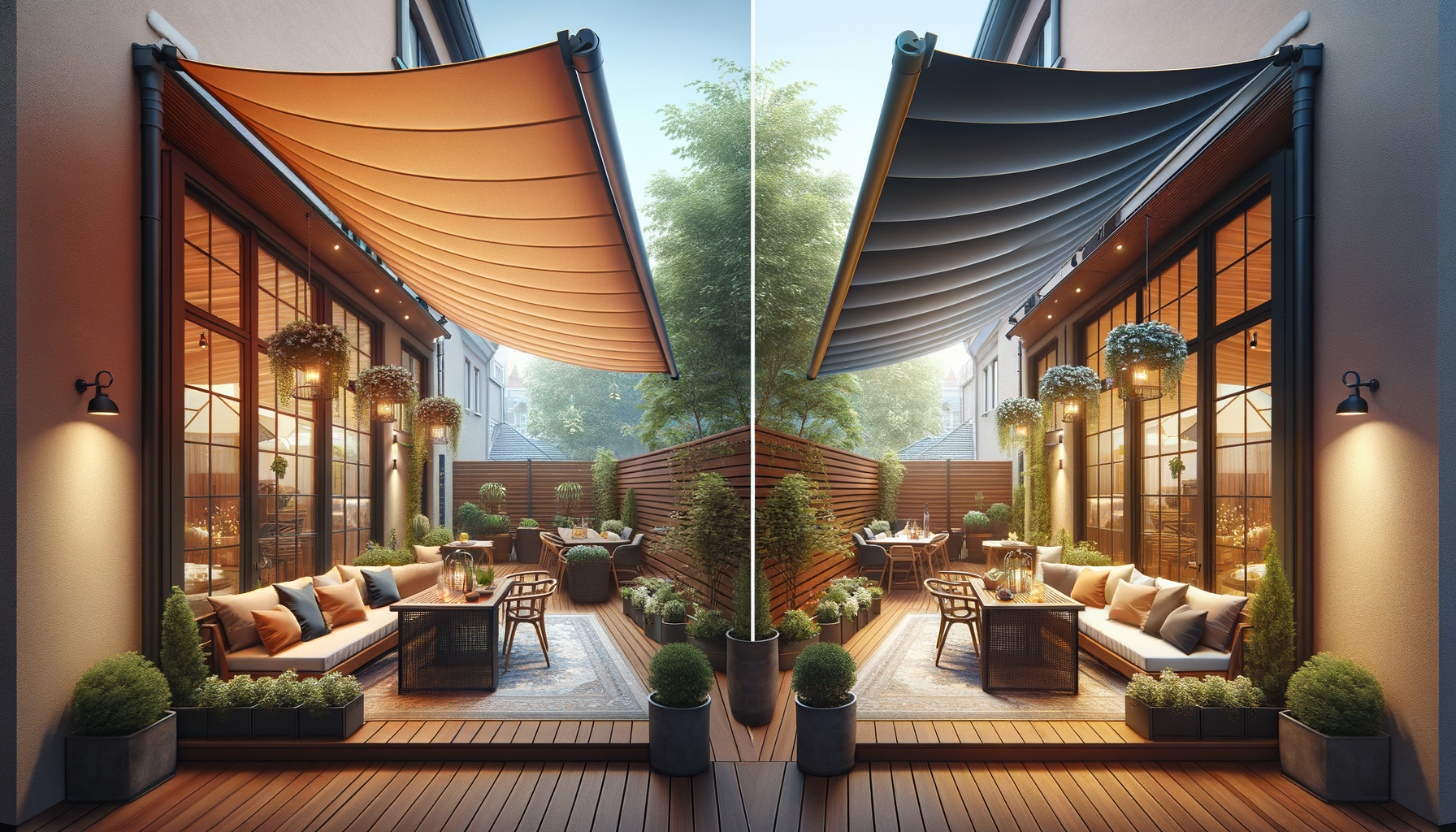
Transform Your Exterior Space with Sophisticated Awnings
Understanding the Versatility of Awnings
Awnings are not just a decorative addition to your outdoor space; they serve multiple practical purposes. Providing shade is the most obvious function, but they also protect against rain and reduce heat, making outdoor areas more comfortable. Awnings can be customized to fit various architectural styles, whether you prefer a modern look or a classic design. The versatility of awnings also extends to their material, with options ranging from fabric to metal, each offering unique benefits. Fabric awnings, for example, come in a plethora of colors and patterns, allowing homeowners to express their personal style while benefiting from UV protection. On the other hand, metal awnings are known for their durability and low maintenance requirements. By understanding these options, you can choose an awning that complements your outdoor space while meeting your specific needs.
Enhancing Aesthetic Appeal
The right awning can transform the appearance of your home or business, adding a touch of elegance and sophistication. Awnings create visual interest and can be used to highlight architectural features. For instance, a brightly colored awning can draw attention to a storefront, while a neutral-toned awning might blend seamlessly with a home’s exterior, enhancing its curb appeal. Beyond color, the style of the awning—whether retractable, stationary, or dome—can significantly impact the overall look. Retractable awnings offer flexibility and a sleek appearance, while stationary awnings provide a more permanent and robust look. By carefully selecting the design and style of your awning, you can ensure it enhances your property’s aesthetic appeal, making it a focal point of your outdoor environment.
Energy Efficiency Benefits
Awnings are not only about style and comfort; they also contribute to energy efficiency. By providing shade, awnings can significantly reduce the amount of heat entering your home or business, thereby lowering cooling costs. Studies have shown that awnings can reduce solar heat gain by up to 65% on south-facing windows and 77% on west-facing windows. This reduction in heat gain can lead to substantial savings on energy bills, especially during the hot summer months. Additionally, awnings protect interior furnishings from fading due to direct sunlight exposure. By investing in awnings, you are not only enhancing your outdoor space but also making a smart choice for energy conservation.
Customization and Personalization
One of the remarkable aspects of awnings is the ability to customize them to fit your specific needs and preferences. From choosing the right fabric and color to selecting the perfect size and shape, customization options are vast. This personalization allows homeowners and businesses to create a unique look that reflects their style and complements their property’s architecture. Additionally, advancements in technology have introduced motorized awnings, which offer convenience and ease of use. With remote control or smart home integration, adjusting your awning to suit the weather or your mood has never been easier. By embracing these customization options, you can create an outdoor space that is not only functional but also uniquely yours.
Installation and Maintenance Considerations
When considering awnings for your outdoor space, it’s essential to think about installation and maintenance. Proper installation ensures that your awning functions correctly and lasts for years to come. It’s advisable to hire professionals who can assess your space and install the awning securely. Once installed, maintaining your awning is relatively straightforward. Regular cleaning and inspection for wear and tear can prevent minor issues from becoming significant problems. For fabric awnings, cleaning involves gentle washing with mild soap and water, while metal awnings may require occasional repainting to prevent rust. By staying on top of maintenance, you can ensure your awning remains a beautiful and functional part of your outdoor space for many years.

